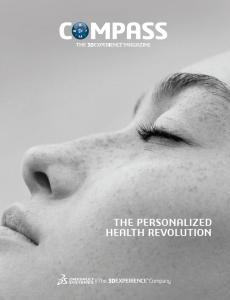
Two billion people across the world are expected to be over 60 years old by 2050 – more than triple the number of 2000. A substantial proportion of this group will have at least one chronic disorder, with many of them having up to eight.
Healthcare systems around the globe are under enormous stress not just from the aging population, but from a wide range of other factors: soaring costs, disjointed resources and inequitable access to name just a few. Experts worldwide are aggressively seeking solutions to make healthcare more sustainable.
Innovation must be at the heart of any change that helps people lead healthier lives. Leading companies in the Life Sciences industry understand that meeting these challenges requires scientific leadership and new processes, within individual organizations to create competitive advantage and by creating stronger ecosystems to deliver holistic, superior patient and physician-centric experiences.
Applying emerging technologies to healthcare offers a lot of promise, making it more affordable, available, personalized and convenient.
One of the most exciting developments is the ability to virtually model the human body. This technology allows researchers and physicians to understand, model, search, test and treat a human body safely, and predict what cannot be seen prior to treating a patient. Because every human is unique in its chemistry, biology and physiology, being able to virtually experience each body opens up tremendous new possibilities. It holds the key to create personalized healthcare.
This can manifest in many ways. The US Food and Drug Administration has stated that treatments for common illnesses are ineffective for up to 75% of patients. This mean doctors go through trial and error to figure out what works for their patient, which can take valuable time. By applying virtual and digital technologies, doctors can know what will work for each individual, because they can now understand their unique makeup.
Another massive change that promises to make healthcare more precise is by harnessing and analyzing data. Using technology platforms to deeply assess large amounts of data can trigger new insights and approaches to patient care. This is why last year Dassault Systèmes made our largest-ever acquisition for Medidata, the world’s leader in clinical trials technology. Medidata’s focus is on leveraging the latest technology to help the life science industry accelerate life-saving treatments to the public. Together our companies are helping the industry discover new methods of treatments and then aiding doctors in identifying and monitoring customized treatments, and reporting that information back for an ongoing cycle of learning.

We just released the latest issue of Dassault Systèmes’ thought-leadership magazine, Compass, and it features a special report that takes a deep look into the trends and technologies that are making the healthcare system more sustainable, more equitable and more favorable to patients and their caregivers. The special report includes short profiles of 11 innovators who are creating and applying technology to advance the pursuit of personalized healthcare. These include companies addressing better ways to support patient diagnosis such as Belgium-based Digital Orthopaedics, who is leveraging 3D virtualization to help healthcare professionals reconstruct the unique pathology of each patient’s foot to accurately establish the root cause of that person’s pain. It also looks at organizations like CELLINK, a Boston-area company that is exploring 3D printing new organs with a patients’ own cells, eliminating the need for donated organs and the risk of rejection It also profiles EPINOV, a collaborative project to improve epilepsy surgery management and prognosis by 3D virtual modeling each patient’s brain.
Dassault Systèmes mission is to improve the world by helping companies apply sophisticated, scientifically accurate 3D virtual universes to improve product, nature and life. We can now apply this approach to people, too. We can power simulations with real patient data to speed the search for more cures treatments. We can support the customization of medical devices to the specific physiologies of individual patients. We can train the next generation of doctors by allowing them to practice techniques on an exact 3D model of a human. We can help change the face of healthcare as we know it.

